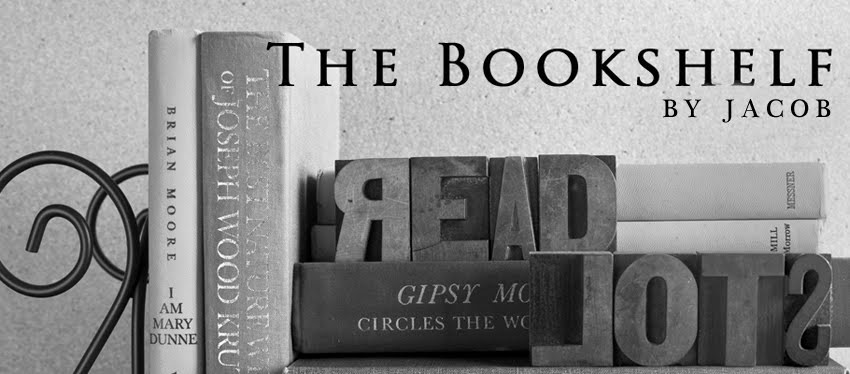
Numerous things caused me to pick up this book,
I Am Number Four by
Pittacus Lore, at my local bookstore a week ago: 1) There is a
movie adaption, also titled I Am Number Four, of it coming out later this month; 2) This book is written under a pseudonym; 3) The actual author, or rather author
s, of this book are,
Jobie Hughes and
James Frey, the latter of which is the controversial author of a fabricated memoir,
A Million Little Pieces; 4) This book is very well designed, with a cool cover and interesting typeface and icons inside; 5) I was intrigued by the title, I Am Number Four, which is
actually part of a sentence,
Three are dead, I am number four. So, knowing these things, I began reading what was sure to be either a big success or a big flop.
I Am Number Four begin with the death of Number Three, one of nine aliens from the planet Lorien that escaped to Earth ten years ago after their planet was destroyed. The planet Lorien was taken over by the Mogadorians, another race of alien, in search of a life-sustaining planet. Number Four, then known as Daniel Jones, knew of Number Three’s death because of a curse that was put upon him and the eight others before departing Lorien at age four. The Mogadorians are out to destroy what is remaining of the people of Lorien, however, due to the curse, they must kill each Lorien in sequential order, one through nine. Each of the nine Loriens are aware of when their fellow allies die, because a small scar forms around their ankle each time one dies.
Upon feeling the third scar form around his ankle, Number Four, a member of the Garde, an elite form of Loriens that at a certain age will develop many supernatural abilities, and his Cepan, a keeper and protector of the Garde, Henri, flee their current home in Florida. They settle down in middle-of-nowhere Paradise, Ohio and start creating a new life. Henri, who is a fatherly figure to Number Four, helps him create a new identity. Number Four is then enrolled in high school and begins to go by the name John Smith.
For his entire life on Earth, almost his whole life, Number Four, John, is taught to not get to connected or involved with his home, his belongings, his town, and the people that live there. This is standard for procedure for John. He is used to leaving at a moment’s notice without even saying goodbye. He understands that if he actually made a true relationship with the people around him, he would be greatly hurt when he would have to leave. So, John starts his first day of school with hope that he’ll do what he’s supposed to do, then go home. Nothing more.
Unfortunately, that doesn’t happen. After receiving a warm welcome from the friendly Sarah Hart, John is taunted and teased by Mark James, her big, jock, ex-boyfriend. After standing up to Mark, John is befriended by Sam Goode, a fellow outcast and space/extraterrestrial beings nerd. John’s plan for no connections with the people around him had gone down the drain. Not to mention, he got his first power, known as a Legacy, the ability to shine light from his hands. All on his first day in Ohio.
The book progresses, with many plot twists and raging emotions: John and Sarah beginning dating, John and Sam becoming best friends, Henri training John to control and properly use his Legacies, and the ever constant threat of the Mogadorians finding Number Four. Ultimately, this book leads to a breath-taking cliffhanger ending, that will lead readers doubled over, waiting for the sequel, The Power of Six, coming out in August. This was, overall, a great first book. It set the scene for many good, potentially even better, sequels to come. My only complaint was that at times the characters seemed bland and two dimensional. This book could have been excellent if it took more time to better explain the feelings of the characters and how they reacted. But it was, overall, a great read.
Rating: 4.25 out of 5 stars
 While meandering through my local library, I came across a seemingly optimistic and friendly book, Happyface, by Stephen Emond. Only when I began reading the first few pages of this book, did I realize that this book is actually a deep, heart-wrenching look at what’s true and what’s fake in life.
While meandering through my local library, I came across a seemingly optimistic and friendly book, Happyface, by Stephen Emond. Only when I began reading the first few pages of this book, did I realize that this book is actually a deep, heart-wrenching look at what’s true and what’s fake in life.


